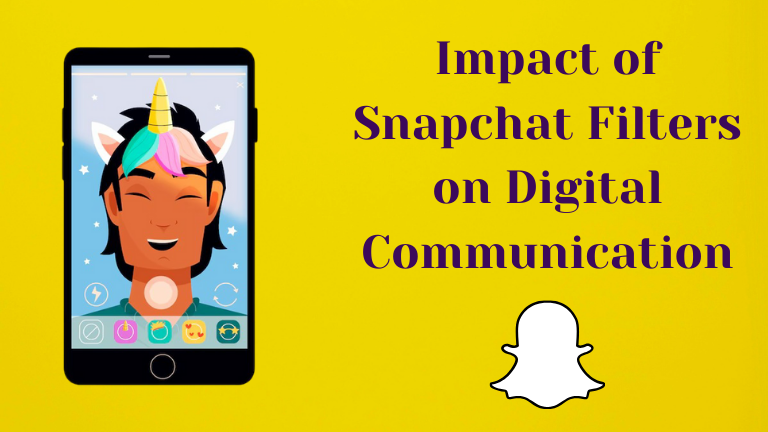In the digital age, Snapchat filters have revolutionized the way we communicate, offering users innovative tools to enhance self-expression and creativity. These filters, which modify facial features and surroundings in real-time, have become integral to online interactions. However, their influence extends beyond mere entertainment, affecting self-perception, social dynamics, and digital communication patterns.
The Rise of Snapchat Filters
Snapchat, launched in 2011, introduced filters as a playful feature to augment photos and videos. Over time, these filters evolved, incorporating advanced augmented reality (AR) technologies that allowed for interactive and immersive experiences. Today, Snapchat offers a vast array of filters, ranging from subtle beauty enhancements to elaborate, animated effects. This evolution reflects a broader trend in social media toward personalized and engaging content creation.
Enhancing Self-Expression and Creativity
Snapchat filters empower users to express themselves uniquely, fostering creativity and individuality. By applying various filters, users can transform their appearances, add humorous elements, or create artistic visuals, enriching their digital narratives. This capability encourages experimentation and personalization, allowing users to curate their online personas actively.
Impact on Self-Perception and Body Image
While filters offer creative freedom, they also raise concerns about self-perception and body image. Studies have shown that frequent use of beauty filters can lead to unrealistic beauty standards, affecting users’ satisfaction with their natural appearances. For instance, research indicates that exposure to digitally altered images can influence individuals’ perceptions of beauty, potentially leading to body dissatisfaction.
Moreover, the concept of “Snapchat dysmorphia” has emerged, where individuals seek cosmetic procedures to emulate their filtered images, highlighting the profound effect of these filters on self-image.
Shaping Social Interactions and Communication
Snapchat filters have transformed social interactions by introducing a playful and dynamic element to digital conversations. They facilitate more engaging and personalized exchanges, enabling users to convey emotions and reactions creatively. This enhancement of non-verbal communication enriches digital dialogues, making them more expressive and interactive.
Influencing Digital Marketing and Branding
Beyond individual use, Snapchat filters have become valuable tools in digital marketing and branding. Businesses leverage custom filters to promote products, events, or campaigns, engaging users in a fun and interactive manner. This strategy not only increases brand visibility but also fosters a deeper connection with the audience through personalized experiences.
Potential Negative Consequences
Despite their benefits, the use of Snapchat filters carries potential negative consequences. Over-reliance on filters can lead to a diminished sense of authenticity in online interactions, as users may prioritize curated appearances over genuine self-representation. Additionally, the pursuit of perfection through filters can contribute to mental health issues, including anxiety and depression, as individuals may feel inadequate when comparing themselves to idealized images.
Table: Positive and Negative Impacts of Snapchat Filters
| Aspect | Positive Impact | Negative Impact |
|---|---|---|
| Self-Expression | Encourages creativity and individuality in digital content creation. | May lead to overemphasis on appearance, overshadowing authentic self-expression. |
| Social Interaction | Enhances engagement through interactive and personalized communication. | Could result in superficial interactions focused on appearance rather than meaningful connection. |
| Marketing and Branding | Provides innovative tools for businesses to engage with consumers. | Potential for promoting unrealistic beauty standards, affecting consumer perceptions. |
| Mental Health | Offers a fun and entertaining escape from daily stresses. | Excessive use may contribute to body dissatisfaction and low self-esteem. |
Conclusion
Snapchat filters have undeniably transformed digital communication, offering avenues for enhanced self-expression, creativity, and engagement. However, it is crucial to navigate their use mindfully, acknowledging and mitigating potential negative impacts on self-perception and social interactions. As digital landscapes continue to evolve, understanding the multifaceted effects of such features will be essential for fostering a balanced and authentic online environment.
Read More : Snapchat Support Code C14A
Frequently Asked Questions (FAQ)
Q1: How do Snapchat filters affect self-esteem?
While Snapchat filters can enhance appearance and boost confidence temporarily, excessive reliance on them may lead to unrealistic beauty standards, potentially impacting long-term self-esteem.
Q2: Can Snapchat filters influence social interactions?
Yes, filters can make digital conversations more engaging and personalized. However, overuse may shift focus from genuine connection to curated appearances.
Q3: Are businesses using Snapchat filters for marketing?
Many businesses create custom filters to promote products and engage consumers, leveraging the fun and interactive nature of filters to enhance brand visibility.
Q4: What is “Snapchat dysmorphia”?
“Snapchat dysmorphia” refers to individuals seeking cosmetic procedures to resemble their filtered images, highlighting the impact of filters on self-image.
Q5: How can users mitigate negative effects of filters?
Users can balance filter use with authentic self-representation, stay mindful of the content they consume, and engage in discussions about realistic beauty standards to promote a healthy digital environment.

